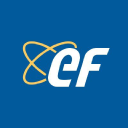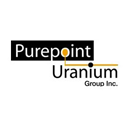Uranium Funding Surge as Prices Jump 24% from March Lows

Uranium supply shocks, policy support, and AI-driven demand create compelling investment case with structural upside potential in constrained market.
- Uranium pricing has demonstrated fundamental strength by recovering from March lows of $63.50 per pound to $78.56 by June 2025, supported by declining secondary supply from decommissioned weapons and utility stockpiles that has dropped from 24 million pounds annually to under 7 million pounds.
- Nuclear energy demand is accelerating through new applications including artificial intelligence and data center power requirements, with corporate buyers increasingly seeking carbon-free electricity commitments while utilities restart reactors and advance new construction projects globally.
- The global uranium market faces an unprecedented dual supply shock with the world's largest producer cutting output by 20% while political instability threatens another major supplier, creating immediate constraints in a market already characterized by extreme concentration where the top five producing countries control 75% of global supply.
- Government policy environments have transformed to support nuclear energy development through domestic production initiatives, market liberalizations, and international financing support, creating favorable regulatory frameworks that address strategic supply chain vulnerabilities.
- Investment capital is flowing into the uranium sector through oversubscribed private placements and strategic partnerships, with companies utilizing flow-through structures and milestone-based financing to advance exploration and development programs while physical uranium funds have accumulated over 60 million pounds of material.
Nuclear energy's intersection with national security priorities has elevated uranium beyond conventional commodity markets into strategic resource considerations. The U.S. ban on Russian uranium imports beginning January 2028, with limited waivers until 2035, creates structural demand for alternative supply sources.
Addionally, the global uranium market faces unprecedented supply constraints through a dual uranium supply shock. Kazakhstan's Kazatomprom, controlling approximately 43% of global uranium production, has reduced output by 20% to a mid-point guidance of 14 million pounds. Simultaneously, political instability in Niger threatens operations at Orano's SOMAIR mine, which contributes approximately 5% of global supply. These disruptions occur within a market structure characterized by extreme concentration, where the top five producing countries account for approximately 75% of global uranium supply. The thin trading profile, averaging only 15-20 million pounds annually compared to 190+ million pounds of reactor requirements, amplifies the impact of production changes on pricing dynamics.
Price Recovery Reflects Fundamental Strength
Uranium pricing has demonstrated resilience despite broader commodity market volatility. Spot prices recovered from March lows of approximately $63.50 per pound to reach $78.56 by June 2025, representing uranium's strongest monthly performance in 2025. Long-term contract pricing has stabilized around $80-89 per pound, providing revenue visibility for producers and indicating utility willingness to secure supply at higher price levels.
The price recovery occurs against a backdrop of declining secondary supply from decommissioned weapons and utility stockpiles, down from peak levels of approximately 24 million pounds annually to under 7 million pounds. This structural shift places greater reliance on primary production at a time when supply capacity faces constraints.
Technological Demand Acceleration
Nuclear energy's role in supporting artificial intelligence and data center applications strengthens the new demand vectors beyond traditional electricity generation. Corporate buyers increasingly seek carbon-free electricity for ESG commitments, with Microsoft's 20-year partnership with Constellation Energy to restart Three Mile Island Unit 1 demonstrating corporate commitment to nuclear power.
Data center electricity consumption projected to grow 15-20% annually drives baseload power demand that aligns with nuclear energy's consistent generation profile. Westinghouse's collaboration with Google on advanced reactor technologies shows how AI applications are driving nuclear development with potentially compressed construction timelines.
Funding Security
Physical uranium funds now hold over 60 million pounds collectively, effectively removing substantial quantities from available supply. Sprott Physical Uranium Trust alone has accumulated over 56 million pounds since 2021 and has raised oversubscribed $200 million to purchase more uranium on the spot market, demonstrating strong institutional demand and tightening supply conditions significantly impact the market conditions.
Policy Environment Transforms Nuclear Outlook
Government policy shifts have fundamentally altered the regulatory and financial environment for nuclear energy development. The U.S. government's push to expand domestic enrichment capacity to address strategic supply chain vulnerabilities while supporting uranium demand.
Centrus Energy has signed with Korea Hydro & Nuclear Power (KHNP) and POSCO International reflecting international collaboration in civilian nuclear development to increase in the supply volume of enriched uranium. Korea represents one of the largest potential export markets for U.S. enriched uranium with 26 nuclear reactors in operation where KHNP is the world’s third largest nuclear plant operator. POSCO International is working to develop a next-generation High-Temperature Gas Reactor powered by HALEU.
“This agreement reflects strong demand for a U.S.-owned uranium enrichment capability and another potential avenue for private investment capital to bring added supply diversity and competition to the marketplace – and meet Korea’s need for affordable, reliable fuel supplies for both new and existing reactors.” - Centrus President and CEO Amir Vexler
India's decision to end its longstanding state monopoly on uranium activities represents a significant market liberalization. The policy change allows private firms to engage in uranium mining, imports, and processing while accepting foreign minority investment to support nuclear expansion objectives.
The World Bank's decision to finance nuclear projects marks a fundamental shift from historical reluctance to support nuclear energy development. This policy change could significantly impact global capital flows and reduce financing costs for nuclear power projects in developing economies.
Capital Deployment Financing Strategies
Standard Uranium announced C$3.5 million private placement exemplifies a focused approach to high-impact exploration spending. The company structured its financing with units priced at C$0.08 for hard dollars and C$0.10 for flow-through shares, each including half-warrant coverage exercisable at C$0.15 for 24 months. CEO Jon Bey emphasized the strategic nature of the capital deployment:
"The funds from those projects pay for themselves and they pay for lots of other things as well. So the capital we're raising right now, this is all going to Davidson River."
The financing strategy leverages partnerships to enhance capital efficiency. For example, the company secured Fleet Space Technologies as a survey partner who provided funding for the ExoSphere Multiphysics survey, reducing direct capital requirements while accessing advanced exploration technology.
Similarly, North Shore's C$1.4 million financing demonstrates how exploration companies are using capital markets to fund strategic acquisitions in favourable jurisdictions. President and CEO Brooke Clements highlighted the strategic rationale:
"The private placement was significantly oversubscribed and we would like to thank our existing shareholders and new shareholders for their support. The Rio Puerco project in New Mexico hosts a significant historical uranium resource and offers us exposure to a uranium project in the USA with excellent upside, at a time when the US government is increasing its support for the nuclear power and uranium mining sectors."
The financing structure incorporates milestone-based payments for the Rio Puerco option agreement, requiring $1.25 million in cash payments and $3.25 million in exploration expenditures over five years to earn 87.5% project interest. This approach provides operational flexibility while managing cash flow requirements through staged commitments.
Purepoint Uranium's C$6 million flow-through financing shows appetite for tax-advantaged uranium exploration investments. The company structured the offering across three tranches: Saskatchewan flow-through units, national flow-through units, and traditional flow-through units. The premium pricing for Saskatchewan flow-through shares reflects the enhanced tax benefits available to investors and the quality of Purepoint's Athabasca Basin assets. The company's partnerships with industry leaders including Cameco Corporation, Orano Canada Inc., and IsoEnergy Ltd. provide operational leverage and technical expertise while reducing direct capital requirements.
Laramide Resources's C$12 million financing represents a larger transaction reflecting the capital requirements of late-stage development projects. The 20,000,000 common shares pricing at C$0.60 per share demonstrates institutional confidence in development-stage uranium projects, particularly those in established jurisdictions. The company allocated proceeds to advance late-stage US permitting initiatives, working capital, and general corporate purposes, indicating focus on regulatory advancement rather than exploration activities.
These transactions reveal how companies are adapting their financial strategies to capitalize on improved market conditions while managing dilution and operational requirements.
Market Dynamics and Strategic Implications
The financing activities demonstrate several key trends in uranium sector capital allocation. Companies are increasingly utilizing flow-through structures to provide tax advantages that justify premium pricing, with Saskatchewan flow-through shares commanding the highest premiums due to enhanced provincial tax benefits.
The oversubscribed nature of several offerings indicates improving investor sentiment toward uranium exploration projects in established mining jurisdictions. The warrant structures provide upside participation while extending the companies' financial runway through potential future exercises.
Partnership strategies, exemplified by Standard Uranium's technology partnerships and project generator model, represent efficient capital allocation approaches that reduce direct funding requirements while maintaining significant project exposure. These structures address the challenge of advancing multiple projects simultaneously within limited capital constraints.
The geographic focus on North American jurisdictions, particularly Saskatchewan's Athabasca Basin and U.S. uranium districts, reflects investor preference for politically stable mining environments amid growing strategic importance of secure uranium supply chains.
The Investment Thesis for Uranium
- Capitalize on supply constraints: Kazakhstan's production cuts and Niger's operational uncertainties create immediate supply tightness in a market already characterized by limited secondary supply and concentrated production
- Benefit from price discovery mechanisms: Thin trading markets amplify supply disruptions while physical fund accumulation removes material quantities from available supply
- Leverage policy tailwinds: U.S. domestic production initiatives, India's market liberalization, and World Bank financing support create favorable regulatory environments
- Target financially robust companies: Select producers with strong balance sheets, established operations, and long-term contract coverage to provide downside protection
- Access technological demand growth: Position for AI-driven electricity demand, corporate clean energy procurement, and advanced reactor deployment through diversified uranium exposure
- Pursue strategic supply chain premium: Western-sourced uranium commands premium valuations amid geopolitical supply chain diversification efforts
- Monitor reactor development pipeline: Track construction timelines and restart schedules to anticipate fuel contracting cycles and demand acceleration
- Consider exploration leverage: Early-stage companies with quality assets in stable jurisdictions offer asymmetric upside potential during supply constraint periods
- Utilize ETF platforms for diversification: Sprott Physical Uranium Trust and uranium equity funds provide broad exposure without single-company concentration risk
- Time contracting cycles: Utility procurement typically accelerates in Q4 and Q1, creating seasonal demand patterns within broader supply-demand dynamics
Corporate Performances Validates Investment Thesis
Leading uranium companies have demonstrated strong operational and financial performance that supports valuation levels.
Cameco Corporation reported Q2 2025 earnings well above expectations with EPS of $0.71 versus forecasted $0.35 and revenue of $877 million against $585 million projected. The results sent Cameco shares up approximately 4.9% in July, indicating investor recognition of fundamental strength.
Standard Uranium's advancement of its Davidson River project exemplifies how exploration companies are positioning for market opportunities. CEO Jon Bey stated,
"Standard Uranium has been working towards this drill program for over three years, and we couldn't be more excited to see the drills turning once again."
The company completed the first ExoSphere Multiphysics survey in the southwest Athabasca Basin region, utilizing advanced geophysical techniques to identify drilling targets. President and VP Exploration Sean Hillacre noted,
"This drill program is the culmination of years of hard work and represents a pivotal point for the Company. Utilizing the best geoscience tools and techniques available to generate our targets for this year, we are beyond excited to get the drill bit back in the ground at Davidson River."
Energy Fuels, operating as the largest uranium producer in the United States on one of the highest grade uranium mine in U.S. history expects to produce up to 1,435,000 pounds U3O8 in 2025. The company's diversification into rare earth elements processing creates exposure to multiple critical mineral themes while leveraging existing infrastructure.
"While our uranium segment showed a loss this quarter due to limited uranium sales, revenue from upcoming contract deliveries, along with possible spot market sales during the remainder of 2025, is expected to provide substantial cash flow starting this year and getting into full swing in 2026 and subsequent years, to be offset against our global operating and capital costs."
The uranium market in 2025 presents a convergence of supply constraints, policy support, and technological demand that creates compelling investment fundamentals. The dual supply shock from Kazakhstan and Niger disrupts approximately half of global production while declining secondary supply places greater reliance on primary producers. Policy shifts supporting nuclear energy development, combined with technological demand from AI applications and corporate clean energy procurement, establish structural demand drivers that extend beyond current market cycles.
Strong corporate performance from established producers and advancing exploration programs provide multiple avenues for investment exposure. For investors seeking participation in critical materials supporting energy transition objectives, uranium offers both immediate catalysts and long-term structural growth potential within a supply-constrained market environment.
Analyst's Notes




Subscribe to Our Channel
Stay Informed
















































